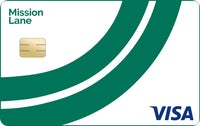Best credit cards for a 500 credit score (or less)

A credit score of 500 or less gives you plenty of room for growth when building your credit, and it won’t exclude you from qualifying for a good credit card. Several credit cards for credit scores in this range or lower offer credit-building tools to help you build your score; some even offer rewards. The cards featured here could get you on the right track for a better score and better cards.
Comparing the best cards for a 500 credit score
| Card name | Annual fee | Security deposit | Bankrate review score |
| Capital One Platinum Secured Credit Card | $0 (See rates and Fees) |
Your minimum security deposit amount will be either $49, $99 or $200 | 4.1 / 5 |
| Petal® 1 "No Annual Fee" Visa® Credit Card | $0 | None | 4.4 / 5 |
| Discover it® Secured Credit Card | $0 | $200 | 4.5 / 5 |
| Petal® 2 "Cash Back, No Fees" Visa® Credit Card | $0 | None | 5 / 5 |
| Mission Lane Visa® Credit Card | $0 - $59 | None | 3.4 / 5 |
Top cards for a credit score of 500 or lower
Best for a low security deposit
Intro offer
N/A
Rewards Rate
N/A
Annual fee
$0
Regular APR
29.74% (Variable)
Best for rewards
Intro offer
Cashback Match™
Rewards Rate
1% – 2%
Annual fee
$0
Regular APR
27.24% Variable APR
Remove a card to add another to compare
Remove a card to add another to compare
Other options for 500 credit score (or less) credit cards

Petal® 1 “No Annual Fee” Visa® Credit Card

Petal® 2 “Cash Back, No Fees” Visa® Credit Card

Mission Lane Visa® Credit Card
How to choose a credit card for bad credit
If you want to pick the right card for you, consider the following factors. Prioritizing these will help you choose a card that meets your needs without straining your credit-building efforts.
Know your credit score
You can request a free credit report every year.
The credit cards you’re eligible for vary based on your credit score and other credit-related factors like age of credit history. Knowing your credit score can help you navigate the cards you qualify for and help you avoid behaviors that could damage your score, like applying for too many credit cards at once. To find your score and view your report, visit Annualcreditreport.com.
Many issuers provide free access to your credit score, but you can access your credit report through the three credit bureaus for free once a year if you don’t have a credit card.
Familiarize yourself with fees
Avoid cards that charge an annual fee and a security deposit.
Issuers often require security deposits upfront to open secured credit cards for bad credit. This collateral is a refundable amount used to fund your credit limit; other cards may charge annual fees, which are non-refundable.
Credit cards for bad credit also tend to have high ongoing APRs and rarely have intro APR offers. The best credit cards for bad credit have either a reasonable annual fee or a reasonable security deposit, a lower ongoing APR and plenty of credit-building incentives.
Focus on building credit
Develop positive credit-building habits to keep your score on the rise.
An advantage of credit cards for bad to fair credit scores is the potential to help you build an even better score over time. You should always look for a card that reports to the major credit bureaus because this will ensure there is a record of your progress. Also, look for cards with incentives for positive credit habits, like credit limit increases or cards that offer the chance to graduate to a more lucrative or unsecured credit card.
From our experts: 6 tips for applying for a credit card with bad credit
How to improve bad credit
The more you can improve your credit score, the better your chances are of accessing higher-quality cards. As a lower-risk borrower, you won’t have to spend as much on the collateral requirements for cards geared toward people with 500 credit scores or lower. Consider the following tips to build your credit consistently over time.
- Always pay on time. Your payment history is 35 percent of your credit score and missing a payment can have drastic consequences. Consider setting up automatic payments or making a note in your calendar to ensure you always pay your bill on time.
- Keep credit utilization ratio low. Use only a small amount of your available credit by setting up a few recurring bills on your card or only using it for budgeted outings. Your credit utilization ratio makes up the second-largest chunk of your credit score after payment history.
- Watch your credit report. Understand how to read your credit report and keep a keen eye out for errors like an unfamiliar employer or an incorrect middle initial. Small errors like these can lower your credit score or even hint at identity theft, so it’s best to be aware of your financial standing.
- Keep your starter credit card. The longer your credit history, the better. Your starter card will often be your first and oldest credit account, which can boost your score after you outgrow the card. Consider keeping the account open (as long as it doesn’t charge maintenance fees), even if you don’t use it.
Frequently asked questions about cards for a 500 credit score
The bottom line
Don’t think a low credit score leaves you out for the count on accessing decent credit cards. You may not get the most lucrative rewards rates and lowest fees, but you can build your way to better cards with responsible habits. Be sure to pick a card that reports your progress to the major credit bureaus, never miss a payment and keep your credit utilization low. These steps can lead you in the right direction when done consistently over time.







